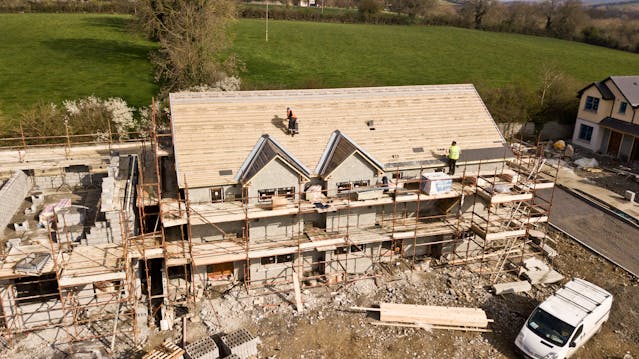Choosing the proper roofing underlayment is critical in ensuring the longevity and performance of your roofing system. As technology advances, homeowners are presented with a choice between traditional and synthetic roofing underlayments. This article delves into the characteristics, benefits, and considerations of each, helping you make an informed decision based on your specific roofing needs.
Understanding Traditional Roofing Underlayment:
For decades, roofing professionals have relied on traditional underlayment, commonly crafted from felt or asphalt-saturated felt, making it a fundamental component in the roofing industry. Renowned for its cost-effectiveness, this material creates a secondary barrier that effectively prevents water infiltration. Typically found in rolls, traditional underlayment is strategically applied in overlapping layers throughout the roofing installation process, ensuring a robust and reliable foundation for various roofing projects. If you seek further information or guidance on roofing matters, visiting https://www.roofing-companies.net/ can provide valuable insights from industry experts.
Pros of Traditional Roofing Underlayment:
- Cost-Effective: Traditional underlayment is generally more budget-friendly compared to synthetic alternatives.
- Breathability: Felt underlayment allows for natural breathability, preventing moisture buildup between the underlayment and roofing materials.
Cons of Traditional Roofing Underlayment:
- Limited Lifespan: Traditional materials may have a shorter lifespan compared to synthetic options.
- Heavier Weight: Felt underlayment tends to be heavier, potentially adding extra weight to the roofing structure.
Exploring Synthetic Roofing Underlayment:

Image credit- https://www.pexels.com/photo/roof-of-buddhist-chapel-13425377/
A recent addition to the market, synthetic roofing underlayment combines polymers, fiberglass, and other advanced materials. Engineered to overcome certain limitations associated with traditional options, this type of underlayment boasts improved durability and performance. Like their traditional counterparts, synthetic underlayment are conveniently available in rolls and installed following a process similar to conventional materials. For emergency roofer Baltimore MD, professionals at Emergency-roof repair can provide swift and reliable assistance.
Pros of Synthetic Roofing Underlayment:
- Durability: Synthetic materials are engineered to resist tearing, wrinkling, and UV damage, offering superior durability.
- Lightweight: Synthetic underlayment is generally lighter, making it easier to handle during installation.
- Longer Lifespan: These materials often have a longer lifespan compared to traditional options.
Cons of Synthetic Roofing Underlayment:
- Higher Cost: Synthetic underlayment can be more expensive upfront, potentially impacting the overall project cost.
- Limited Breathability: Some synthetic materials may have reduced breathability compared to traditional options.
Considerations for Your Roofing Project:
- Climate: Consider your local climate and weather conditions when choosing synthetic and traditional underlayment. Certain climates may benefit from the enhanced durability of synthetic materials.
- Budget: Evaluate your budget constraints and weigh the initial cost against the long-term benefits of each underlayment type.
- Roofing Material Compatibility: Ensure your chosen underlayment is compatible with the roofing materials you plan to use.
Conclusion:
When deciding between synthetic and traditional roofing underlayment, it’s essential to weigh the factors of cost, durability, and climate suitability.
While traditional options offer affordability, synthetic underlayments provide advanced features that can enhance the longevity and performance of your roofing system, especially in challenging climates.
Ultimately, your choice should align with your roofing project’s requirements and your long-term goals for a secure and resilient roof. By selecting the right underlayment, you can ensure the longevity and performance of your roof, contributing to a better home selling experience in the future.




